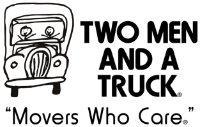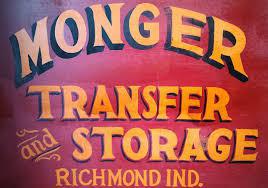Indiana Movers Top Rated
(888) 787-7813141 Movers in Indiana
Page 1/10
Professional Indiana Moving Companies
Whether you need to move your furniture or you want the best car transport in Indiana, one thing is certain. You want Indiana long distance movers who are reliable. Indiana moving company reviews can tell you a lot about local movers and self-service movers. Free moving estimates are always available here on Moving Authority. We've got all the information you could want about your American moving company so that you can make an educated decision. Secure a moving cost estimate today, and have your fantastic move as soon as possible.
THE ART OF MOVING A REFRIGERATOR — WITHOUT BREAKING YOUR BACK
- Make sure it’s empty. Eat or discard all contents of the fridge before you move.
- Clean it out. Ensure that your fridge is fully cleaned and dry inside before you attempt to move it.
- Remove all drawers or tape them shut. This way, nothing will get damaged in transit.
- Lay the fridge on its back. If you put the fridge on the side, you run the risk of either breaking the hinges or the handle.
- Wrap the fridge in a moving blanket and use a dolly. This way, your fridge will be contained against nicks and damage, and its weight will be evenly distributed during transit.
- If you need guidance, get help from qualified movers Indiana. Better safe than sorry!
5 Adventures in Indiana You Won’t Want to Miss
- Children’s Museum of Indiana
- Marengo Cave
- Fort Wayne Children’s Zoo
- Indiana Medical History Museum
- Clifty Falls State Park
DON’T FALL FOR THE SCAMS: WAYS TO SPOT ROGUE MOVERS
- If you don't understand a part of the contract, that's normal. It's the moving company's job to explain everything to you and have you agree to the terms. If your moving company refuses to do this (either by speaking in jargon you're not familiar with or flat-out refusing to clarify), then you shouldn't do business with them.
- If moving companies Indiana go to great lengths to hide the reviews received from previous clients, that's a huge indicator that something went wrong before, and they don't want you to know about it.
- If moving companies in Indiana don't have a valid licensing status from the USDOT and the FMCSA, the company isn't in compliance with the law.
- If your movers in Indiana don't have a tariff readily available, this is not a good sign. A tariff is a document required by law which outlines the terms and conditions of the moving company. Without it, the company will fail inspections done at random by the USDOT.
5 Indiana Restaurants That Will Make You Come Back for More
- Caplinger’s Seafood, Indianapolis
- Feast, Bloomington
- Loving Cafe, Fort Wayne
- Pizzology, Carmel
- Milktooth, Indianapolis
Movers By City in Indiana
Indianapolis
(1740)
Fort Wayne
(127)
Evansville
(105)
South Bend
(120)
Bloomington
(15)
Lafayette
(45)
Elkhart
(45)
Terre Haute
(37)
Gary
(105)
Anderson
(45)
Greenwood
(315)
Valparaiso
(82)
Carmel
(30)
Fishers
(105)
Hammond
(82)
Kokomo
(22)
Columbus
(30)
West Lafayette
(15)
Noblesville
(75)
Crown Point
(82)
Do you know?

- A moving company, removalist, or van line are all companies that help people as well as other businesses to move their goods from one place to another. With many inclusive services for relocation like packing, loading, moving, unloading, unpacking and arranging of items can all be taken care of for you. Some services may include cleaning the place and have warehousing facilities.
- According to the U.S. Census Bureau, 40 million United States citizens have moved annually over the last decade. Of those people who have moved in the United States, 84.5% of them have moved within their own state, 12.5% have moved to another state, and 2.3% have moved to another country.
- In the United States and Canada, the cost for long-distance moves is generally determined by a few factors. The first is the weight of the items to be moved and the distance it will go. Cost is also based on how quickly the items are to be moved, as well as the time of the year or month which the move occurs. In the United Kingdom and Australia, it's quite different. They base price on the volume of the items as opposed to their weight. Keep in mind some movers may offer flat rate pricing.
- Many people are familiar with this type of moving, using truck rental services, or borrowing similar hardware, is known as DIY moving. Whoever is renting a truck or trailer large enough to carry their household goods may obtain moving equipment if necessary. Equipment may be items such as dollies, furniture pads, and cargo belts to protect furniture and to ease the moving process.
- As most people have experienced, moving does involve having the appropriate materials. Some materials you might find at home or may be more resourceful to save money while others may choose to pay for everything. Either way materials such as boxes, paper, tape, and bubble wrap with which to pack box-able and/or protect fragile household goods. It is also used to consolidate the carrying and stacking on moving day. Self-service moving companies offer another viable option. It involves the person moving buying a space on one or more trailers or shipping containers. These containers are then professionally driven to the new location.
- There many reasons for moving, each one with a unique and specific reason as to why. Relocation services, employee relocation, or workforce mobility can create a range of processes. This process of transferring employees, their families, and/or entire departments of a business to a new location can be difficult. Like some types of employee benefits, these matters are dealt with by human resources specialists within a corporation.














